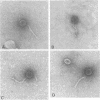Abstract
Strains of serotypes I and II of Propionibacterium were compared for phage sensitivity. The two serotypes could be distinguished by using a typing set consisting of 16 bacteriophages at concentrations that demonstrated selective lysis of serotype I or II bacterial strains. Seven phage types were found; three were composed exclusively of serotype I, and four were exclusively composed of serotype II organisms. Generally, serotype I strains were more sensitive to phage lysis than were serotype II strains. No correlation was found between phage type and site of isolation.
Full text
PDF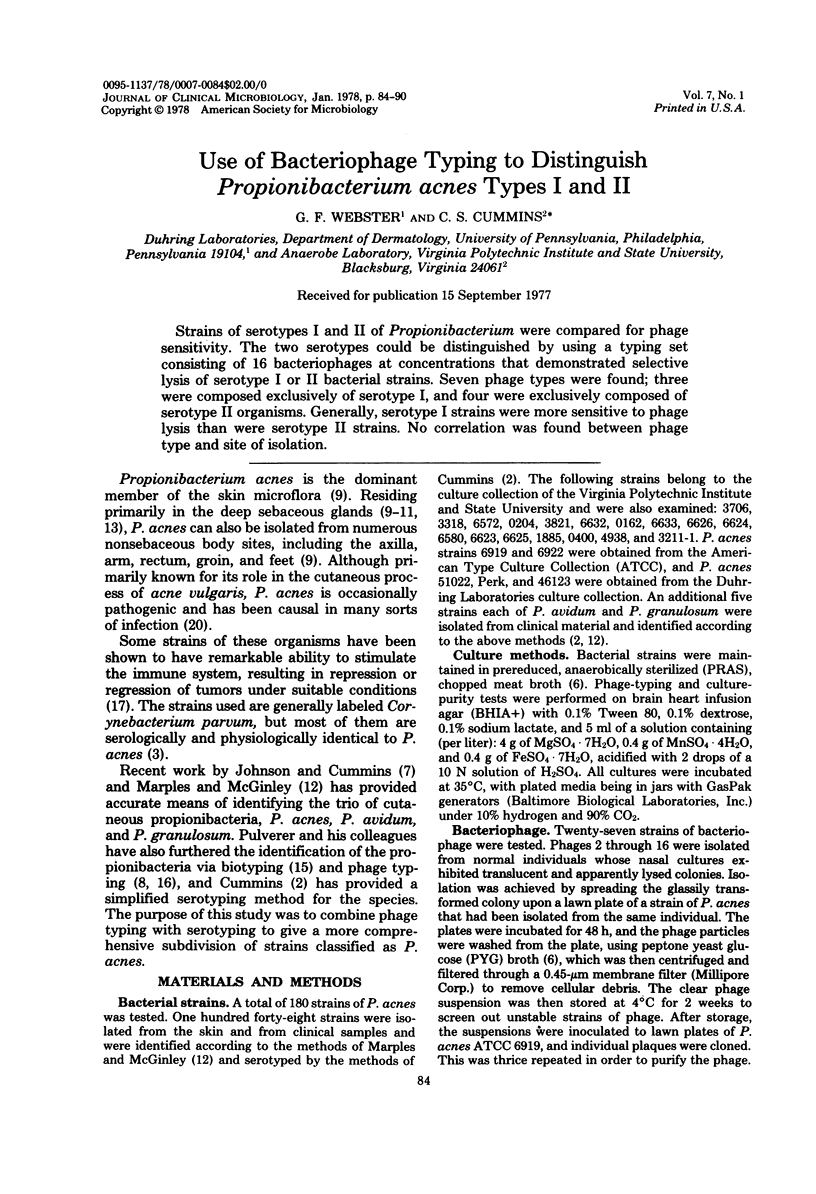
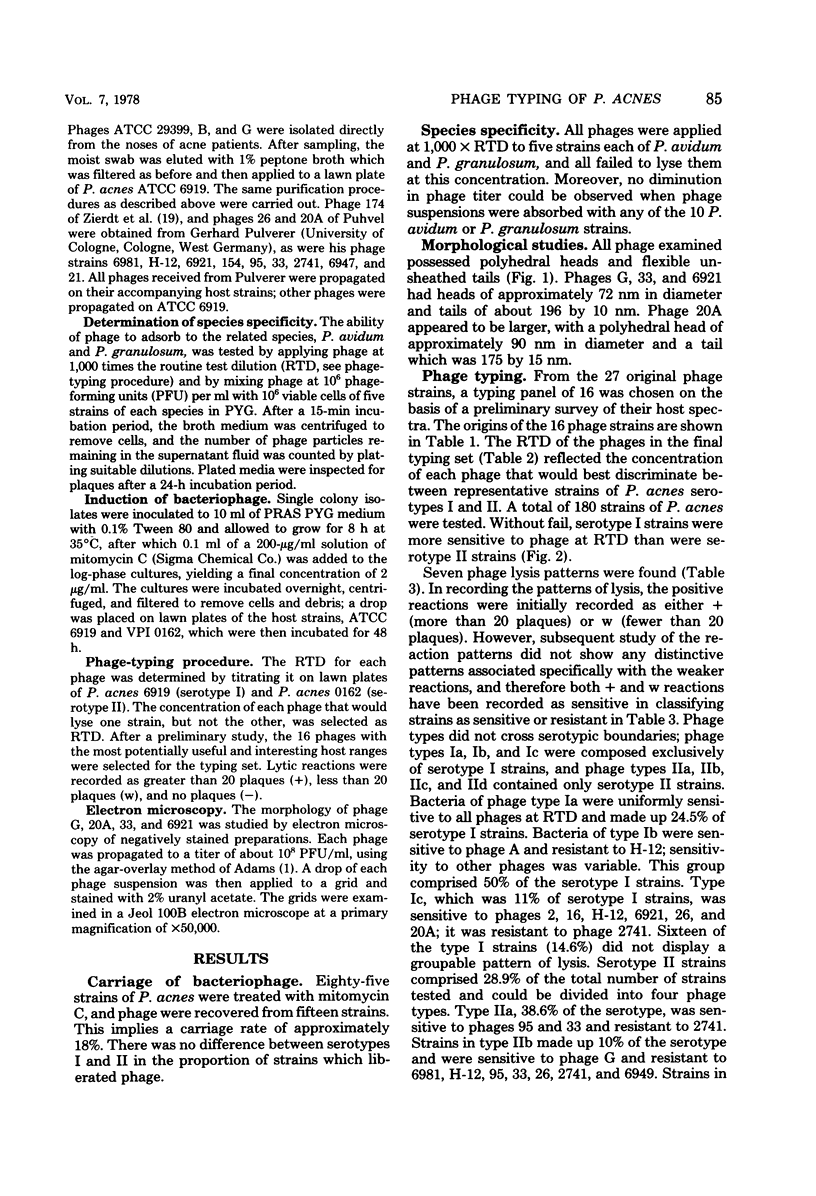
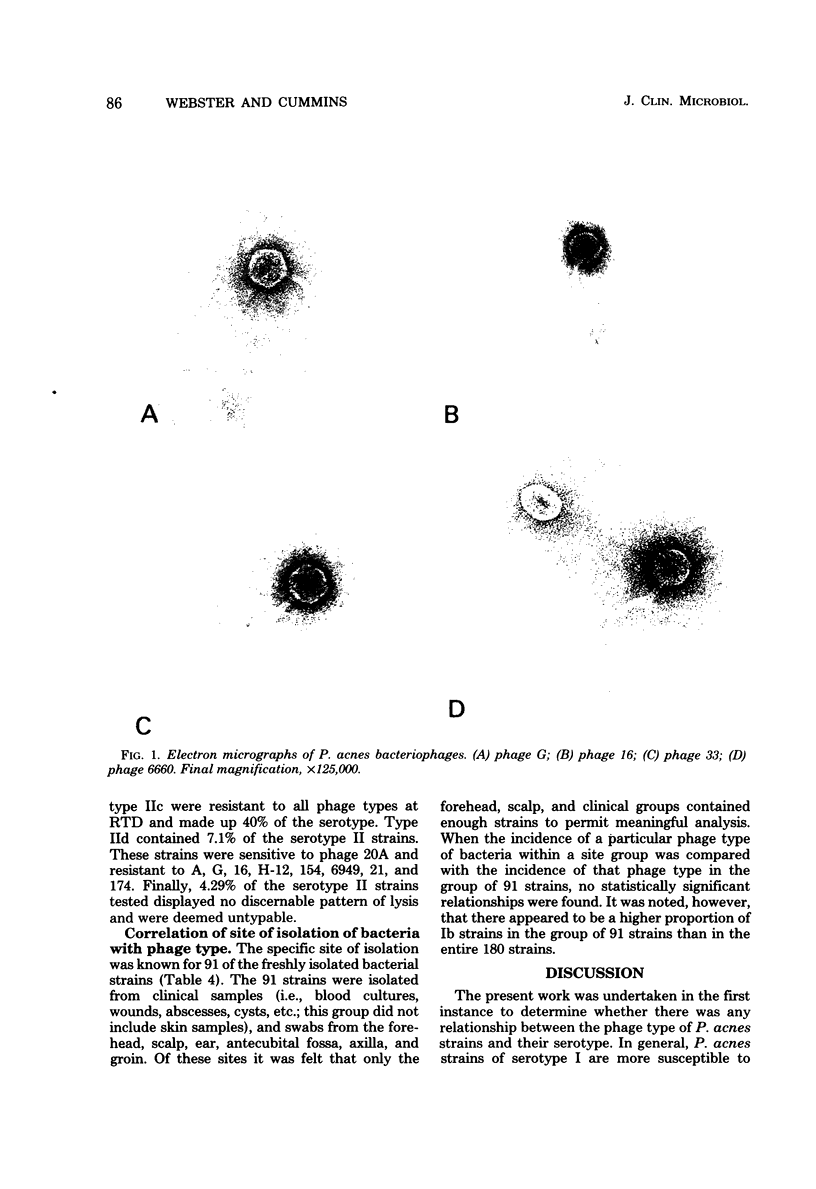
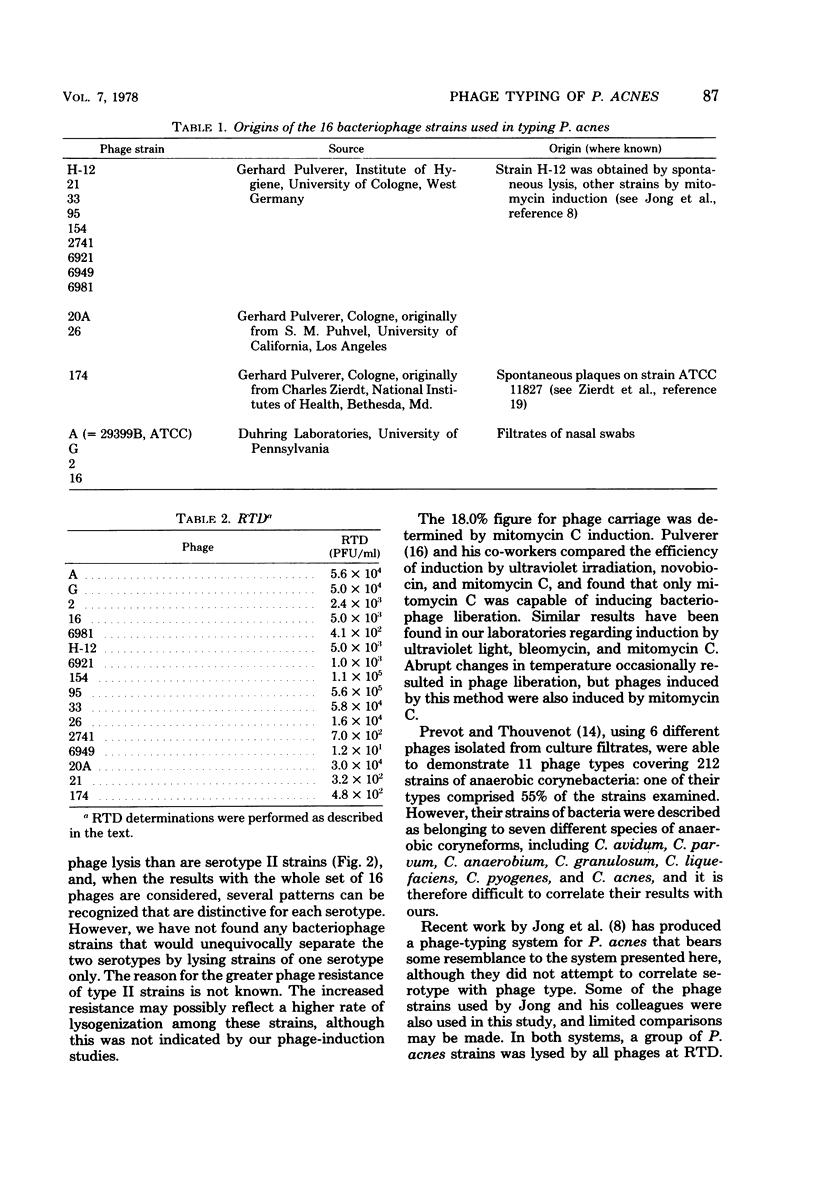
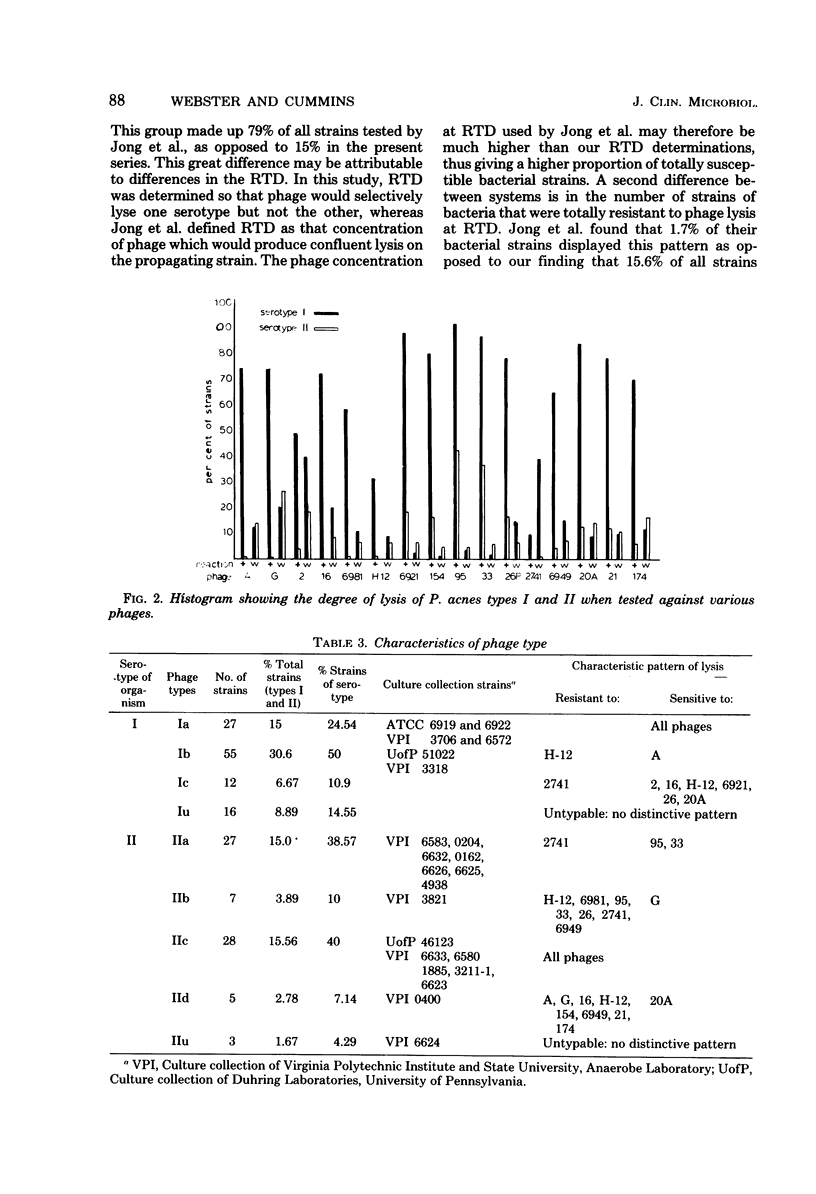
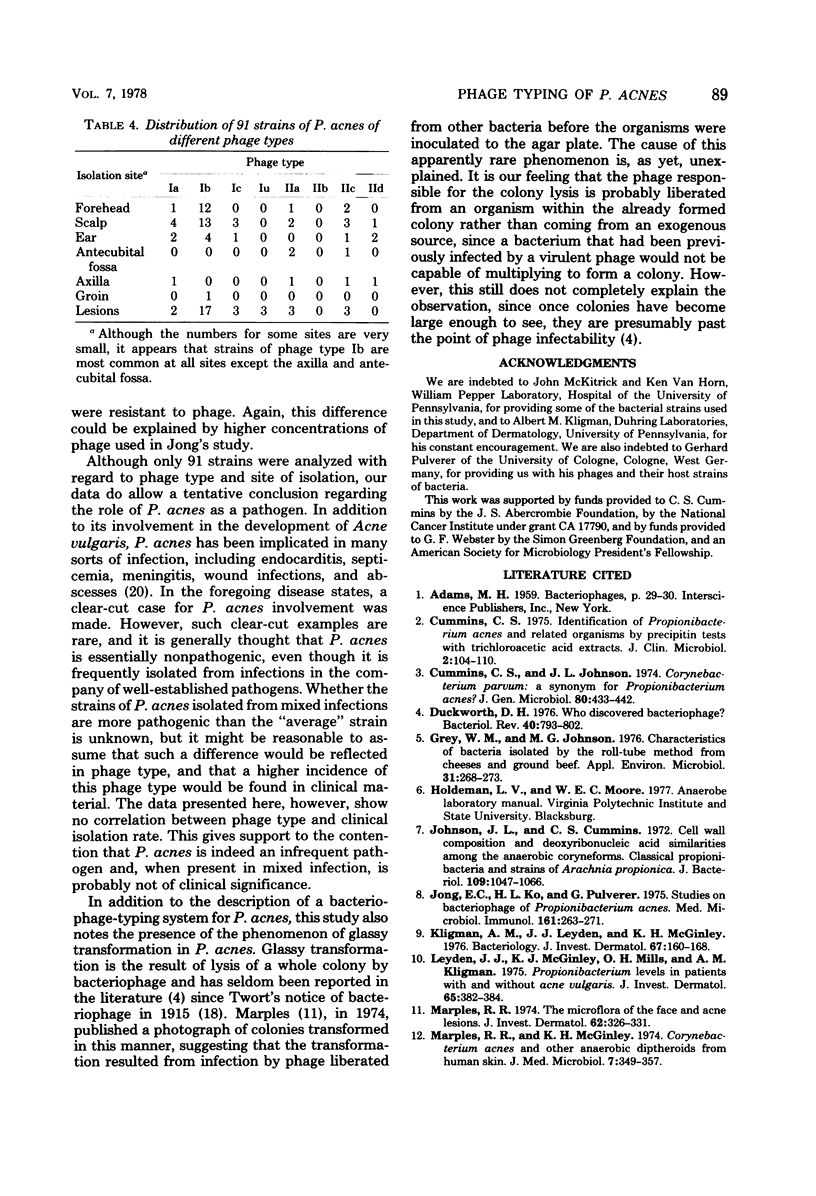
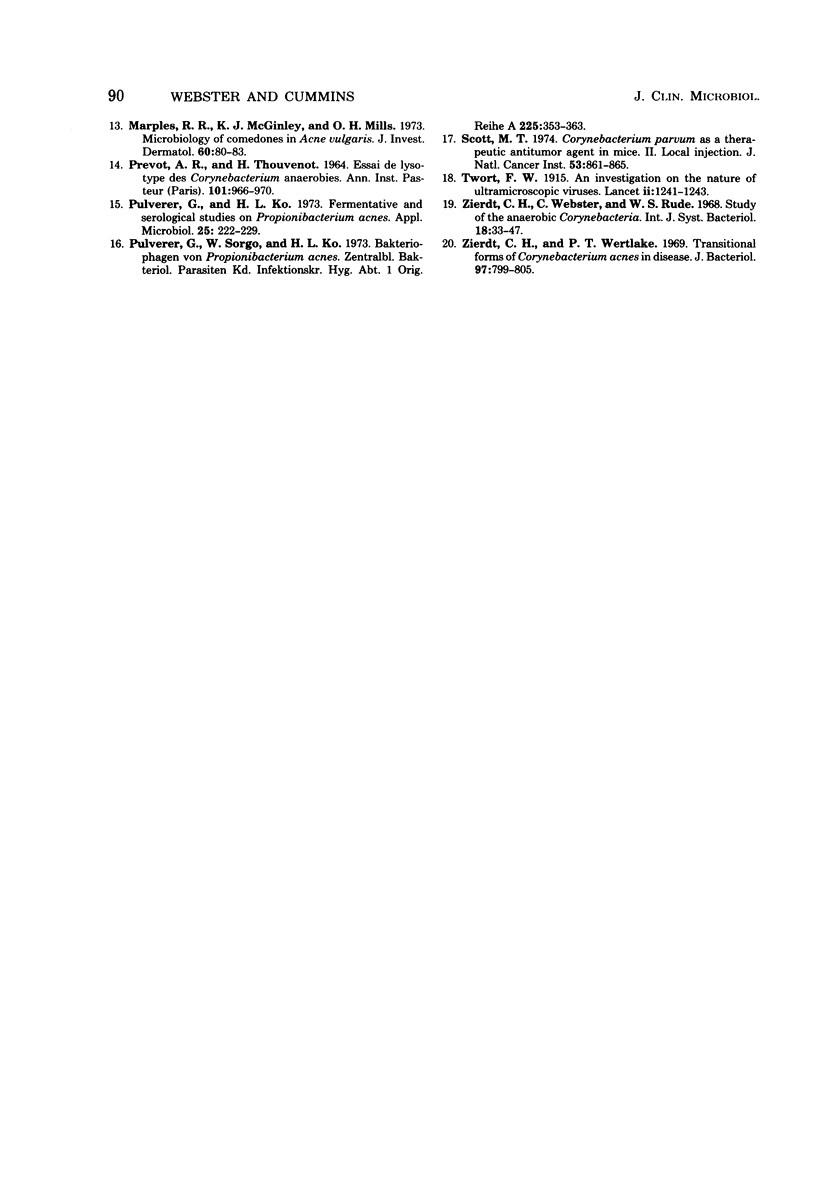
Images in this article
Selected References
These references are in PubMed. This may not be the complete list of references from this article.
- Cummins C. S. Identification of Propionibacterium acnes and related organisms by precipitin tests with trichloroacetic acid extracts. J Clin Microbiol. 1976 Aug;2(2):104–110. [PMC free article] [PubMed] [Google Scholar]
- Cummins C. S., Johnson J. L. Corynebacterium parvum: a synonym for Propionibacterium acnes? J Gen Microbiol. 1974 Feb;80(2):433–442. doi: 10.1099/00221287-80-2-433. [DOI] [PubMed] [Google Scholar]
- Duckworth D. H. "Who discovered bacteriophage?". Bacteriol Rev. 1976 Dec;40(4):793–802. doi: 10.1128/br.40.4.793-802.1976. [DOI] [PMC free article] [PubMed] [Google Scholar]
- Gray W. M., Johnson M. G. Characteristics of bacteria isolated by the anaerobic roll-tube method from cheeses and ground beef. Appl Environ Microbiol. 1976 Feb;31(2):268–273. doi: 10.1128/aem.31.2.268-273.1976. [DOI] [PMC free article] [PubMed] [Google Scholar]
- Johnson J. L., Cummins C. S. Cell wall composition and deoxyribonucleic acid similarities among the anaerobic coryneforms, classical propionibacteria, and strains of Arachnia propionica. J Bacteriol. 1972 Mar;109(3):1047–1066. doi: 10.1128/jb.109.3.1047-1066.1972. [DOI] [PMC free article] [PubMed] [Google Scholar]
- Jong E. C., Ko H. L., Pulverer G. Studies on bacteriophages of Propionibacterium acnes. Med Microbiol Immunol. 1975 Sep 19;161(4):263–271. doi: 10.1007/BF02122714. [DOI] [PubMed] [Google Scholar]
- Kligman A. M., Leyden J. J., McGinley K. J. Bacteriology. J Invest Dermatol. 1976 Jul;67(1):160–168. doi: 10.1111/1523-1747.ep12513007. [DOI] [PubMed] [Google Scholar]
- Leyden J. J., McGinley K. J., Mills O. H., Kligman A. M. Propionibacterium levels in patients with and without acne vulgaris. J Invest Dermatol. 1975 Oct;65(4):382–384. doi: 10.1111/1523-1747.ep12607634. [DOI] [PubMed] [Google Scholar]
- Marples R. R., McGinley K. J. Corynebacterium acnes and other anaerobic diphtheroids from human skin. J Med Microbiol. 1974 Aug;7(3):349–357. doi: 10.1099/00222615-7-3-349. [DOI] [PubMed] [Google Scholar]
- Marples R. R., McGinley K. J., Mills O. H. Microbiology of comedones in acne vulgaris. J Invest Dermatol. 1973 Feb;60(2):80–83. doi: 10.1111/1523-1747.ep12724149. [DOI] [PubMed] [Google Scholar]
- Marples R. R. The microflora of the face and acne lesions. J Invest Dermatol. 1974 Mar;62(3):326–331. doi: 10.1111/1523-1747.ep12724285. [DOI] [PubMed] [Google Scholar]
- PREVOT A. R., THOUVENOT H. [Attempted phage-typing of anaerobic Corynebacteria]. Ann Inst Pasteur (Paris) 1961 Dec;101:966–970. [PubMed] [Google Scholar]
- Pulverer G., Ko H. L. Fermentative and serological studies on Propionibacterium acnes. Appl Microbiol. 1973 Feb;25(2):222–229. doi: 10.1128/am.25.2.222-229.1973. [DOI] [PMC free article] [PubMed] [Google Scholar]
- Pulverer G., Sorgo W., Ko H. L. Bakteriophagen von Propionibacterium acnes. Zentralbl Bakteriol Orig A. 1973 Dec;225(2):353–363. [PubMed] [Google Scholar]
- Scott M. T. Corynebacterium parvum as a therapeutic antitumor agent in mice. II. Local injection. J Natl Cancer Inst. 1974 Sep;53(3):861–865. doi: 10.1093/jnci/53.3.861. [DOI] [PubMed] [Google Scholar]
- Zierdt C. H., Wertlake P. T. Transitional forms of Corynebacterium acnes in disease. J Bacteriol. 1969 Feb;97(2):799–805. doi: 10.1128/jb.97.2.799-805.1969. [DOI] [PMC free article] [PubMed] [Google Scholar]



